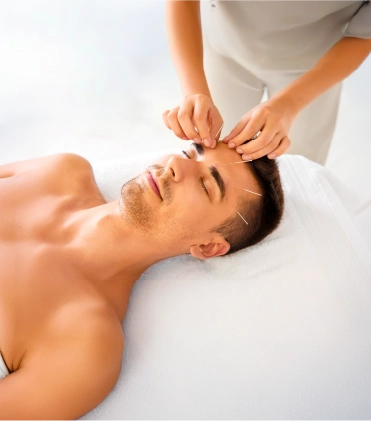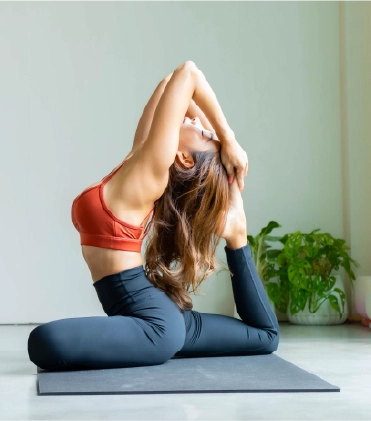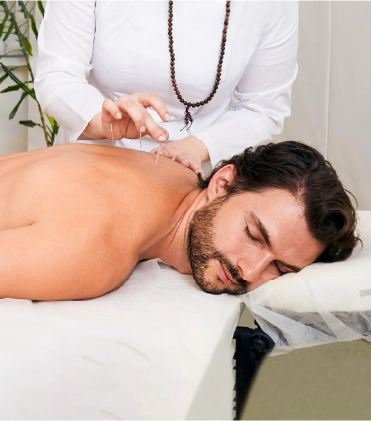What is the treatment?
Cupping therapy is an ancient practice in which cups are placed on the skin to create suction which helps to stimulate blood flow and is used to treat neck pain, lower back pain, and migraine. There are two main types of cupping: dry cupping in which only suction is applied through cups, and wet cupping in which minor cuts are made on the skin to remove small amounts of blood. This helps to promote the healing of the body through natural processes.
Philosophy/Origin
Cupping therapy has been used in Egyptian, Chinese, and Middle Eastern cultures for over 2,000 years. The philosophy behind cupping is based on the concept of improving the flow of "qi" or life energy in Traditional Chinese Medicine (TCM). Cupping therapy helps to remove blockages of this energy in the body by removing toxins and harmful substances. When this energy of life is blocked, it leads to various types of illness. However, cupping therapy can be used to promote circulation and detoxification processes in the body.
Physical Benefits
Mental/Emotional Benefits
Long-Term Wellness
Cupping therapy can be done for people with chronic conditions such as fibromyalgia, arthritis, or persistent back pain to improve their quality of life. Cupping can improve the health of the skin by promoting circulation and stimulating collagen production. Regular treatments also help to strengthen the immune system.
Ideal Audience
Athletes and individuals with muscle injuries can receive cupping therapy for its effectiveness. People with fibromyalgia and other pain conditions also benefit from cupping therapy. People who prefer holistic care rather than pharmacology are ideal for cupping therapy to promote overall physical health.
Specific Conditions
The treatment of cupping therapy is mentioned below
Consultation
During the consultation, the therapist takes the history of the individual to understand any health issues. It is necessary to select the most appropriate treatment such as dry cupping, wet cupping, or a combination of both.
Cup Placement
The therapist will place a cup on specific points on the body. Common areas for cup placement are the back, shoulders, and neck. Different-sized cups may be used depending on the area in which the cupping therapy is performed.
Dry Cupping
In dry cupping, the therapist will use a pump to generate a vacuum inside the cup. The suction pulls the skin and underlying tissue into the cup which stimulates the blood flow and promotes recovery.
Wet Cupping
In wet cupping, the therapist will make tiny cuts on the skin with a sterile blade. Then, the cups are placed back on the area to draw out a small amount of blood along with toxins.
Treatment Duration
The cups are left in place for 5 to 20 minutes according to the intensity of the suction and the condition for which the cupping therapy is being performed.
Cup Removal
The therapist carefully releases the suction by lifting one edge of the cup. This allows the skin to return to its normal position.
Cleansing
In the case of wet cupping, the therapist will cleanse the small incisions after removing the cups and may apply medications to prevent infection.
What to Expect
During the session, the individuals will feel a strong pulling sensation as the cups create suction on the skin. This can feel tight but the procedure is not painful. In wet cupping, mild pain can be felt when the therapist makes cuts on the skin. After the session, it is common to have marks where the cups were placed, which usually fade within a week.
Immediate Effects
Long-Term Effects
The individual can experience long-term improvements in muscle function, especially in areas with tension. People with chronic conditions like arthritis or fibromyalgia may notice a significant reduction in pain and inflammation. Long-term cupping can also improve skin elasticity and complexion.
Before the Treatment
The therapists usually recommend not to eat a large meal before the session, as lying down and the suction might cause discomfort if the stomach is full. It is also best to keep the skin clean and free of lotions or oils that could interfere with cup placement.
Aftercare
It is ideal to rest for at least 24 hours after the session to promote maximum recovery and to absorb the benefits of cupping therapy. It is suggested to avoid hot baths and direct sunlight exposure after the session.
Cupping therapy is performed in various holistic care centers and some physical therapy practices. It is performed in both traditional and modern therapeutic settings. Some platforms like Wellencia may offer cupping as part of a whole treatment package that includes massage or acupuncture.









